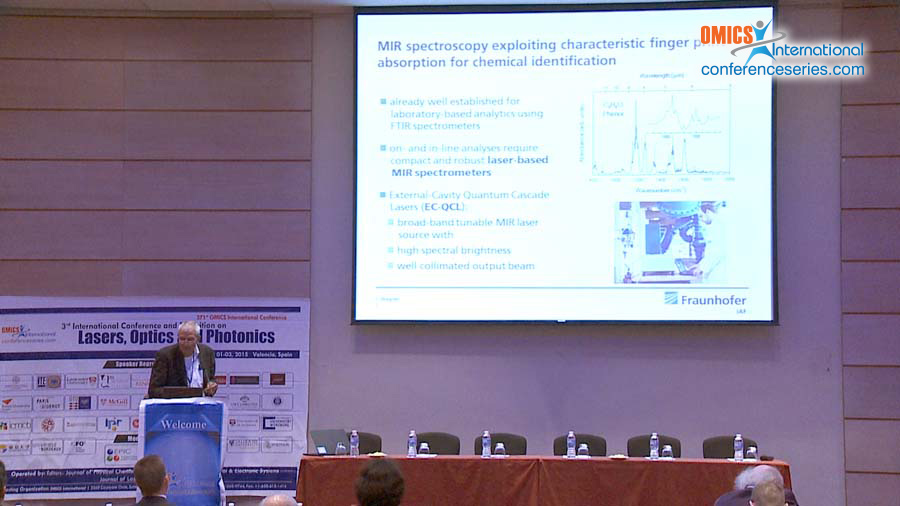
Joachim Wagner Hans
Fraunhofer Institute for Applied Solid State Physics (IAF), Germany
Title: Recent advances in widely tunable quantum cascade lasers and their use in spectroscopic sensing
Biography
Biography: Joachim Wagner Hans
Abstract
Widely tunable quantum cascade lasers (QCL) are ideal light sources for spectroscopic sensing exploiting characteristic finger print absorption of molecules in the mid-infrared (MIR) spectral range. Such broadband tunability can be achieved by placing a QCL chip with a broad gain spectrum into an external cavity (EC-QCL), using e.g. a diffractive grating as wavelength-dependent feedback-element. This way wavelength tuning over >25% of the central wavelength can be achieved routinely in the MIR spectral range. EC-QCLs deliver a well collimated low-divergence output beam with high spectral brightness, which enables a range of new applications. These include in-line MIR spectroscopic sensing of substances in aqueous solutions and MIR backscattering spectroscopy for stand-off detection of hazardous substances. First we report on recent advances in broadband-tunable MIR EC-QCL technology by presenting a first implementation of a rapid scan EC-QCL, employing a custom-made large diameter (=5 mm) MOEMS scanning grating in Littrow-configuration as wavelength-selective optical feedback-element. This way, a scanning rate of 1 kHz was achieved, which corresponds to 2000 full wavelength scans per second. Second, exemplary case studies of EC-QCL based MIR spectroscopy will be presented. These include in-line spectroscopy for the detection of contaminants in water as well as imaging MIR backscattering spectroscopy for the detection of residues of explosives and related precursors on various kinds of surfaces in a realistic environment.


